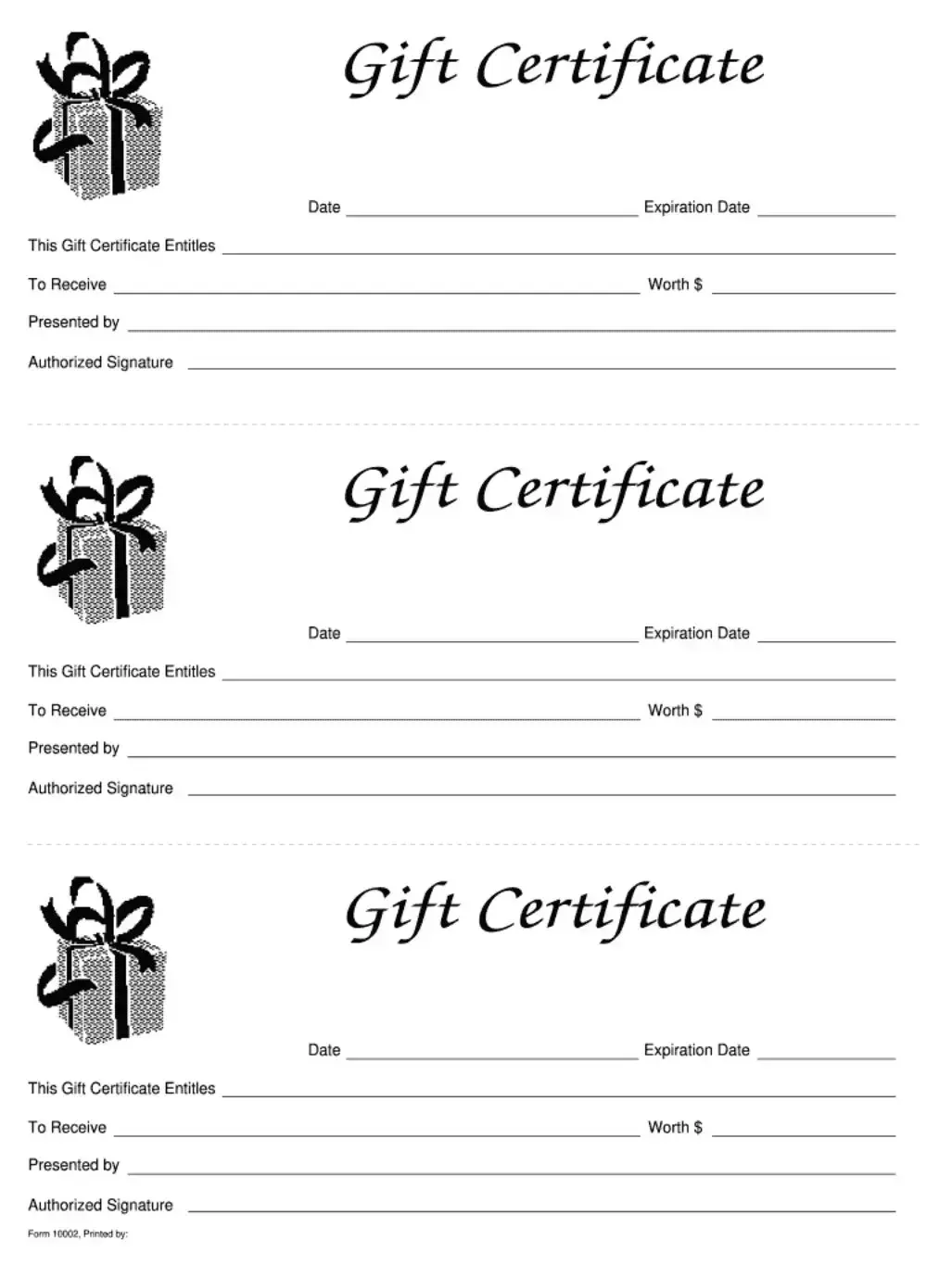What is a gift certificate form?
A gift certificate form is a document that allows businesses to create and distribute gift certificates for their products or services. This form typically includes details such as the certificate’s value, the issuing business’s name, and any applicable terms or expiration dates. It serves as a simple way for businesses to offer customers a unique gifting option while also promoting their services.
How do I fill out a gift certificate form?
Filling out a gift certificate form is usually a straightforward process. Start by entering the name of the recipient, the dollar amount of the gift certificate, and the name of the issuing business. It’s also important to include any expiration date, if applicable, and specific terms or conditions tied to the gift certificate. Make sure to review everything for accuracy before issuing it to ensure a smooth experience for both you and the recipient.
Can gift certificates have an expiration date?
Yes, gift certificates can have expiration dates. However, the regulations on expiration dates vary by state. While some states allow expiration dates under certain conditions, others may restrict them entirely. It’s important to check your local laws to ensure compliance. Including an expiration date can add clarity to the gift certificate’s terms, allowing both the giver and the recipient to understand the time frame in which the certificate can be used.
Can gift certificates be used with discounts or promotions?
Whether a gift certificate can be used in conjunction with discounts or promotions depends on the specific policies of the issuing business. Some businesses allow customers to apply gift certificates towards discounted items or services, while others may restrict their use to full-priced offerings. It’s wise to clarify these details when issuing or redeeming a gift certificate to avoid any confusion or disappointment.
What happens if a gift certificate is lost or stolen?
If a gift certificate is lost or stolen, the ability to recover its value usually depends on the policies of the business that issued it. Many businesses may require proof of purchase or a serial number to reissue a lost certificate. It’s a good practice to keep the gift certificate in a safe place and to inform the recipient of these details at the time of gifting. Familiarizing yourself with the business's policies can help prevent potential issues down the line.

